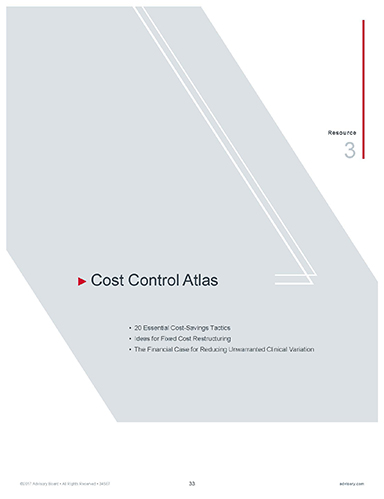Auto logout in seconds.
Continue LogoutStates governments in 2015 spent a total of about $605 billion—or about $1,880 per resident—on health care, according to an analysis by 24/7 Wall Street, USA Today reports.
Analysis details
For the analysis, 24/7 Wall Street reviewed:
- Data from the U.S. Census' American Community Survey for 2016 on the share of the population over age 65, in poverty, and with a disability in all 50 states;
- Health care expenditures for all 50 states in 2015; and
- U.S. Census Bureau data from 2015 on state and local finances—such as state revenue, cash, and security holdings—for all 50 states.
The analysis examined only direct state spending, and did not take into account local or federal spending on health care. 24/7 Wall Street then ranked each state based on total state health expenditures per capita.
States' health care spending per capita
The analysis found that health care spending represented more than a quarter of individual states' total spending in 2015. State health care spending included expenses related to Medicaid, medical schools, state-run hospitals, and programs for community wellness, health inspection, pollution control, and substance use disorders.
Of those expenses, states spent the most on Medicaid, with spending on the program accounting for about 80% of annual state health care costs. According to the analysis, state health care spending in 2015 ranged from about $1,000 per capita to $3,000 per capita.
The five states that spent the most per capita on health care in 2015 were:
1. New Mexico, which spent $3,225 per capita, or a total of $6.7 billion;
2. New York, which spent $2,911 per capita, or a total of $57.6 billion;
3. Kentucky, which spent $2,618 per capita, or a total of $11.6 billion;
4. Vermont, which spent $2,605 per capita, or a total of $1.6 billion; and
5. Massachusetts, which spent $2,596 per capita, or a total of $17.6 billion.
According to the analysis, the five states that spent the least per capita on health care in 2015 were:
50. South Dakota, which spent $1,022 per capita, or a total of $877 million;
49. Nebraska, which spent $1,186 per capita, or a total of $2.2 billion;
48. Georgia, which spent $1,242 per capita, or a total of $12.7 billion;
47. New Hampshire, which spent $1,259 per capita, or a total of $1.7 billion; and
46. Nevada, which spent $1,315 per capita, or a total of $3.8 billion.
According to the analysis, states typically spent more on health care when they had broader Medicaid eligibility requirements and benefits, and more poor, disabled, and elderly residents. For example, of the 20 states with the highest per capita spending, the analysis found Mississippi was the only one that had not expanded its Medicaid program under the Affordable Care Act. In contrast, the analysis found that 12 of the 20 states that spent the least per capita on health care in 2015 had not expanded Medicaid.
States' insurance coverage breakdowns
In terms of health insurance, the analysis found that the five states with the highest shares of insured residents were:
1. Massachusetts, with 97.5% of the population insured;
2. Hawaii, with 96.5% of the population insured;
3. Vermont, with 96.3% of the population insured;
4. Minnesota, with 95.9% of the population insured;
5. Rhode Island, with 95.7% of the population insured; and
5. Iowa, with 95.7% of the population insured.
According to the analysis, the five states with the lowest shares of insured residents were:
50. Texas, with 83.4% of the population insured;
49. Alaska, with 86% of the population insured;
48. Oklahoma, with 86.2% of the population insured;
47. Georgia, with 87.1% of the population insured; and
46. Florida, with 87.5% of the population insured (Sauter, 24/7 Wall Street/USA Today, 8/20).
Join our most popular webconference series: Health Insurance 101
Back by popular demand: This webconference series includes four 30-minute online sessions which will cover the fundamental aspects of health insurance structure and delivery, updated to review the latest trends in the industry.
Don't miss out on the latest Advisory Board insights
Create your free account to access 1 resource, including the latest research and webinars.
Want access without creating an account?
You have 1 free members-only resource remaining this month.
1 free members-only resources remaining
1 free members-only resources remaining
You've reached your limit of free insights
Become a member to access all of Advisory Board's resources, events, and experts
Never miss out on the latest innovative health care content tailored to you.
Benefits include:
You've reached your limit of free insights
Become a member to access all of Advisory Board's resources, events, and experts
Never miss out on the latest innovative health care content tailored to you.
Benefits include:
This content is available through your Curated Research partnership with Advisory Board. Click on ‘view this resource’ to read the full piece
Email ask@advisory.com to learn more
Click on ‘Become a Member’ to learn about the benefits of a Full-Access partnership with Advisory Board
Never miss out on the latest innovative health care content tailored to you.
Benefits Include:
This is for members only. Learn more.
Click on ‘Become a Member’ to learn about the benefits of a Full-Access partnership with Advisory Board
Never miss out on the latest innovative health care content tailored to you.

